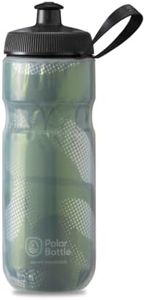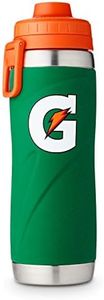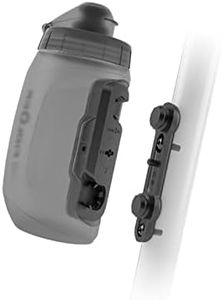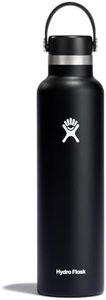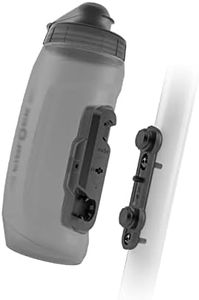We Use CookiesWe use cookies to enhance the security, performance,
functionality and for analytical and promotional activities. By continuing to browse this site you
are agreeing to our privacy policy
10 Best Bicycle Water Bottles
From leading brands and best sellers available on the web.Buying Guide for the Best Bicycle Water Bottles
Choosing the right bicycle water bottle might not seem a big deal at first, but it can make a major difference in your comfort, convenience, and hydration while riding. The ideal bottle should be easy to access, easy to use while riding, and suitable for your typical ride lengths. Pay attention to materials, sizes, ease of cleaning, the nozzle design, and overall durability. Think about your riding style—whether you prefer long rides, fast sprints, or mountain biking—as your needs might be quite different.MaterialThis refers to what the bottle is made from—most commonly plastic, stainless steel, or sometimes insulated options. The material impacts the weight, durability, and taste. Plastic bottles are lightweight and flexible, making them easy to squeeze while riding, but can sometimes retain flavors. Stainless steel offers better durability and can help keep drinks colder, but it tends to be heavier and isn't as easy to squeeze. If you care about keeping your drink cold or hot for longer rides, look for bottles with double-wall insulation. Pick a material based on your preferences for weight, insulation, and how sensitive you are to taste changes.
CapacityThis is the amount of liquid the bottle can hold, usually measured in milliliters or ounces. Bottles typically range from smaller sizes (around 500ml or 17oz) to larger ones (up to 750ml or 25oz or above). Smaller bottles are easier to handle and lighter, making them ideal for short rides or when you prefer carrying less weight. Larger bottles mean fewer refills, which is great for longer distances or rides in hot weather. Consider how long your typical rides are and how much hydration you need when selecting capacity.
Nozzle TypeThe nozzle or cap design determines how you drink from the bottle. The most common types are push-pull spouts, bite valves, and twist tops. Push-pull spouts are popular for quick sips, allowing you to drink with one hand while riding. Bite valves usually provide a leak-proof solution and are good if you like a secure seal, but might require a bit more effort to use. Twist tops offer extra security but take longer to open. Think about how easy you want drinking to be while riding and whether you'll be riding on rough terrain or smooth roads.
Ease of CleaningSome bottles are easier to clean than others, depending on their shape, lid complexity, and whether they can be taken apart. Wide-mouth bottles are generally easier to clean and to add ice cubes, while bottles with complex nozzles or internal straws can be harder to maintain. If you often drink sugary drinks or want to avoid mold build-up, choose a bottle that's simple to disassemble and is dishwasher safe.
Fit with CageThis refers to whether the bottle fits well in standard bicycle bottle cages or holders. Bottles come in slightly different shapes and sizes, and a poor fit could mean the bottle rattles, falls out, or is difficult to remove while riding. Most bottles are designed to work with standard cages, but check before buying—especially if your bike has a small frame or unconventional cage. Consider testing the fit with your cage, or looking for bottles marketed as 'universal fit' if you're unsure.
Grip and SqueezeThis spec highlights both the ease with which you can hold and squeeze the bottle while riding. Some bottles come with textured surfaces or ergonomic shapes that help you keep a firm grip, even with sweaty hands or gloves. Squeezable bottles make it quicker to drink on the move. If you have small hands, wear gloves, or often ride in wet conditions, a bottle with a good grip texture and a comfortable squeeze will be easier and safer to use.
